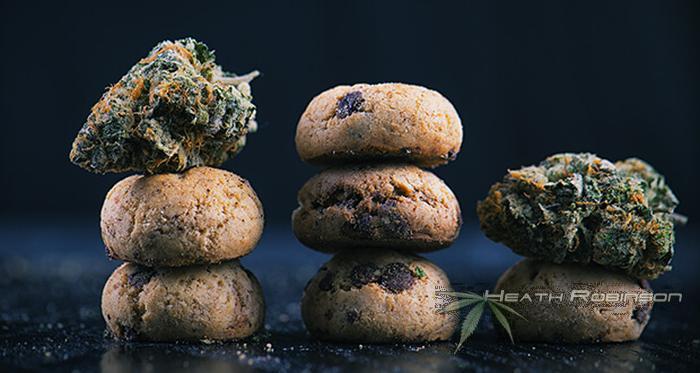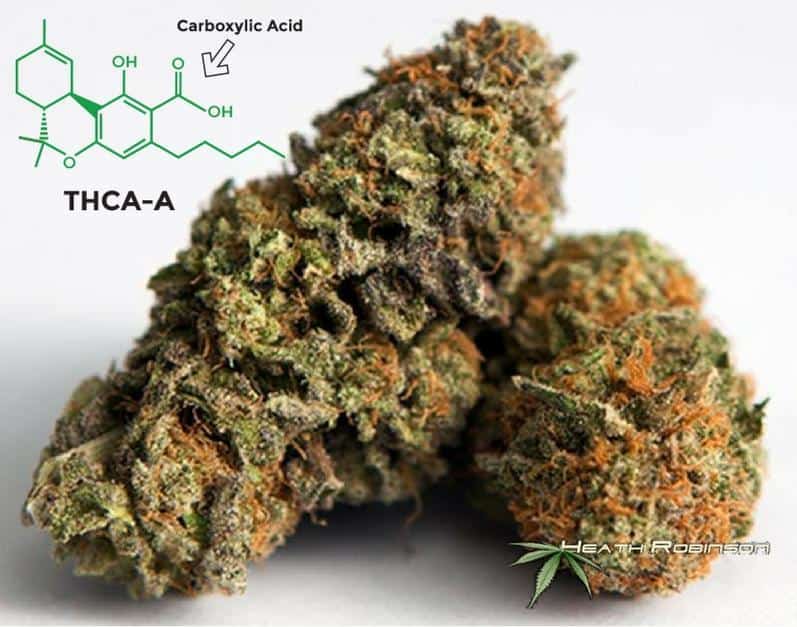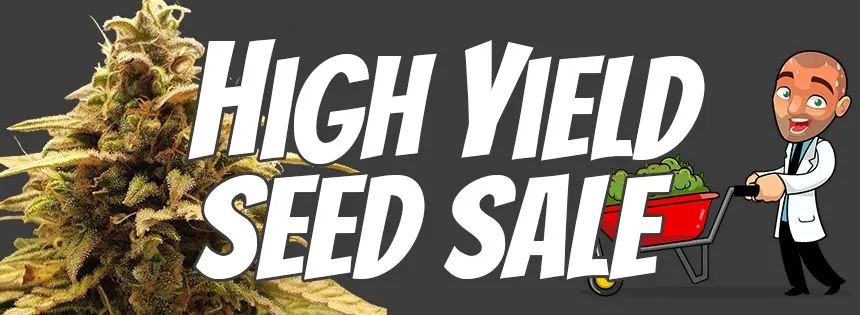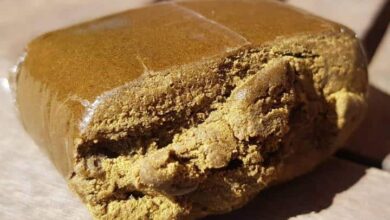The importance of decarboxylation in the preparation of cannabis edibles. Although smoking marijuana is the most popular form of consumption, there is growing popularity in the use of edible cannabis products. They are considered a healthy alternative to smoking. Especially for medical use,
Decarboxylation is the process of heating cannabis to a specific temperature to activate the plant’s chemical compounds. Decarboxylation is one of the essential steps in cannabis production, and it’s also one of the most misunderstood. There are many misconceptions about decarboxylation, and many people don’t know what it is or how it works. The following briefly introduces decarboxylation and its use in cannabis production.

The long duration of action is fascinating. Numerous recipes are circulating online, primarily for cannabis butter, brownies, or cocoa. Despite this, there is uncertainty about how to cook with cannabis reliably. Many users are unaware of the decarboxylation process, which is very important to make the most of the properties of cannabis when using edibles.
Often the preparations do not work as desired, but once you understand the properties of the active ingredients, cooking and baking with cannabis are easily manageable. To allow the THC to be available in cooking, it must always be decarboxylated. The THC in the plant is not effective at all; it has an acidic carboxyl group and is therefore called THC-A (A for “Acid” = acid).
Decarboxylation to make cannabis edibles at home
Making edibles at home is a great way to save money and experiment with different flavors. To make your cannabis edibles, you will need decarboxylation. This process involves heating cannabis in the oven to activate the THC and convert it into THCA. This process is similar to decarbing coffee beans. You will need a glass baking dish, parchment paper, an oven-safe pot, and a candy thermometer.
No matter how potent and high the percentage of a plant you use, it must first lose the carboxyl group, that is, be decarb. Otherwise, the THC does not work. This sounds scientific, but decarboxylation is a natural process of decay, which is accelerated by heating.
Anyone who smokes a joint decarboxylates their cannabis simultaneously because smoking creates temperatures of 400 to 800 °C. Instead of decarboxylation, one can, therefore, speak of activation. The higher the temperature, the faster the THC activates.
For various diseases, ingesting cannabis through dyes, oils, or edible products makes more sense, as is the case with cannabis. Through dyes, oils, or edible products ends up causing more sense, as is the case of childhood epilepsy. Similarly, for patients who do not like smoking or do not feel comfortable with the smell of smoke, this may be a more helpful alternative to smoking. The consumption of edibles also avoids lung damage, one of the main criticisms of those who oppose the medical use of marijuana.
Are you dying to test one of the thousands of recipes available online, but are you afraid of doing something wrong and wasting the grass? We will now explain the precautions and measures necessary to prepare edible cannabis.
Do terpenes affect edibles?
Cannabis terpenes are the compounds that give cannabis its distinct smell and flavor. There are hundreds of terpenes in cannabis, but three are most important to note: myrcene, pinene, and limonene. When these compounds interact with food, they create the effects that we know as cannabis edibles. However, cannabis terpenes have a lot of different products on their own.
Myrcene can cause a sedative effect and is a critical ingredient in cannabis indica strains. Pinene is the main compound that gives cannabis its aroma and can cause a more energizing effect. Limonene is the compound that gives cannabis its citrus flavor and is known for its anti-inflammatory properties. There are still many questions, but it is clear that terpenes play an essential role.
Before you begin, it is good to remember that the effects of cannabis ingested may be quite different from smoked cannabis. While the inhaled smoke passes through the lungs it reaches the blood system in a few seconds, causing an almost instantaneous effect, digestion is a different process.
The digestive process is slower and differs from person to person. While a person with an accelerated metabolism who has not eaten in a few hours can feel the effects of a space cake in less than 30 minutes, others may not feel anything for more than two hours until THC settles into the bloodstream.
This means that while it is easy to control the dosage of smoked marijuana because of the instantaneous effect, ingested marijuana can fool the less experienced. Its a common problem for the novice many consumers of cannabis edibles have waited more than an hour without feeling any effect, and Judging that the dosage was very low, consume more marijuana to try to compensate. This leads to excessive consumption, with a stronger effect than intended.
In addition, the same amount of marijuana can have a more intense effect when ingested than when smoked. Part of the cannabinoids is lost during smoking, which does not occur during ingestion. The way marijuana is prepared also alters the amount of each cannabinoid – we’ll explain it better later. The digestive process seems to affect how cannabinoids are processed in the body, and can potentiate their effects. Therefore, it is important to be careful with the dosage and to gradually test – starting with a smaller amount of marijuana – increasing as needed.
Decarboxylation The Science.
Cannabis, in its natural form, has large amounts of the acidic forms of THC, CBD-THCA, and CBDA. These raw cannabinoids have less affinity for the cannabinoid receptors scattered throughout the human body and do not bind to them so quickly. Meaning that unless you decarb cannabis, there would be little to no psychoactive effect.

Unlike THC, THCA is not psychoactive; THCA and CBDA are transformed into THC and CBD through oxidation, which occurs during the drying of flowers, and decarboxylation, which occurs with the heating of the herb.
Controlling the temperature
For decarboxylation to occur as desired, temperature control and heating time are required. Take into account the following considerations:
The goal of decarbing is to transform THCA and CBDA into THC and CBD to obtain more significant amounts of these cannabinoids and potentiate the effects of the herb;
At about 70% decarboxylation, the conversion of THC to CBN is faster than the conversion of THCA to THC;
If your goal is to get more THC, the heating should be stopped in time;
If it passes the point, there will be a higher concentration of CBD and CBN, making the final product more sedative and less psychoactive.
Decarboxylating cannabis can be controlled to obtain a different final product as the user requires. Take care not to overheat and lose a lot of cannabinoids.
How to decarboxylate to make edibles
The most important part of this process is ensuring that your oven is completely turned off before you begin cooking. Once you have everything prepared, place the cannabis in the oven-safe pot and cover it with parchment paper. Heat your oven to 240 degrees Fahrenheit for 30 minutes. After 30 minutes, turn off the oven and let the cannabis cool down in the closed pot for 1 hour.
After 1 hour, remove the pot from the oven and transfer the cannabis into a glass dish. It should be cool enough to touch by now. Once you have moved the cannabis into a glass dish, heat it to 240 degrees Fahrenheit for 10 minutes. This process can be repeated multiple times until you achieve the desired potency of your edibles.

- Preheat the oven to 110 ° C;
- Line tray with baking paper;
- Break the buds into smaller pieces and fill the bottom of the baking tray. Keep the pieces close to each other, without overfilling the tray, but also avoid leaving too much free space;
- Heat marijuana in the oven for about 20 minutes to dry the buds. Remove the bud when it has a light brown color;
- Leave the tray aside to cool. Meanwhile, heat the oven to 115 ° C;
- When the buds cool, break them into smaller pieces by hand and spread them until they cover the bottom of the baking tray;
- Cover the tray with foil and put it back in the oven;
- For higher concentration of THC, bake for 45 to 60 minutes;
- For greater concentration of CBD, bake for 60 to 90 minutes;
- Remove from oven and allow to cool before removing foil. When the foil is removed, the bud should be a brownish color. If the pieces are still very large, place the product in a food processor (very lightly! Do not turn it into a powder!).
- Preserve the final product in a properly sealed glass jar.
- For a higher concentration of THC, bake for 45 to 60 minutes;
For a greater concentration of CBD, bake for 60 to 90 minutes;
All Done, you now have decarboxylated cannabis!




